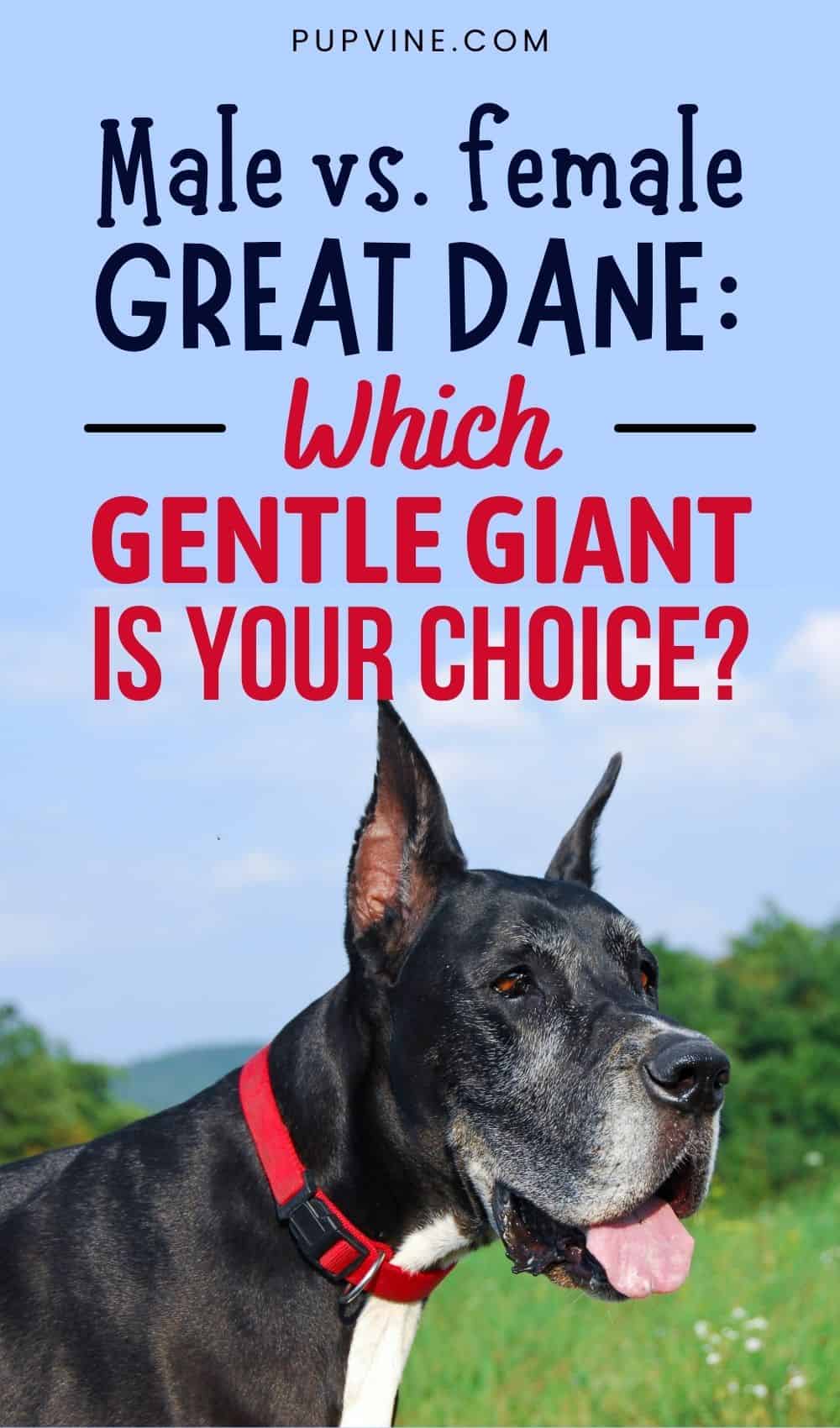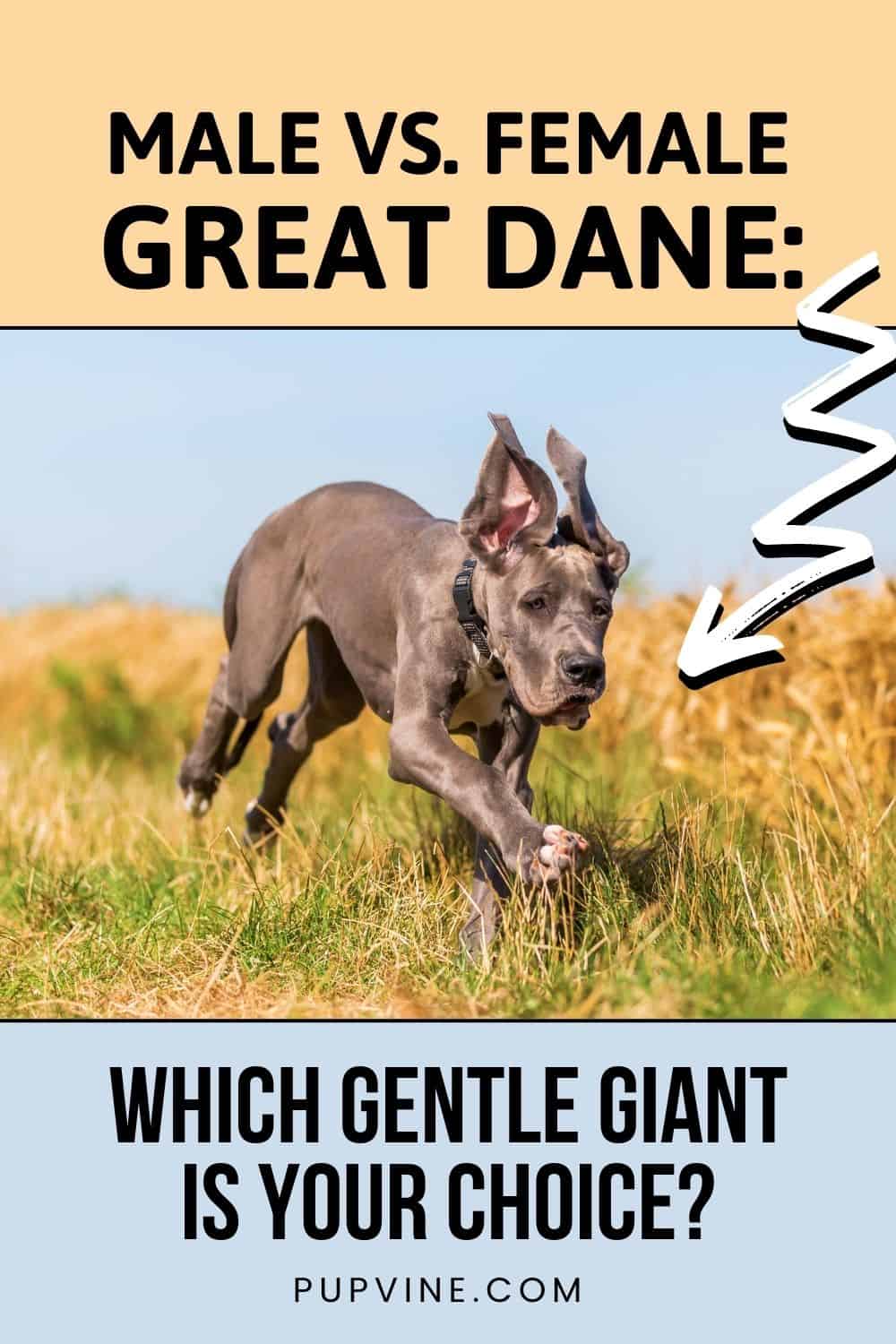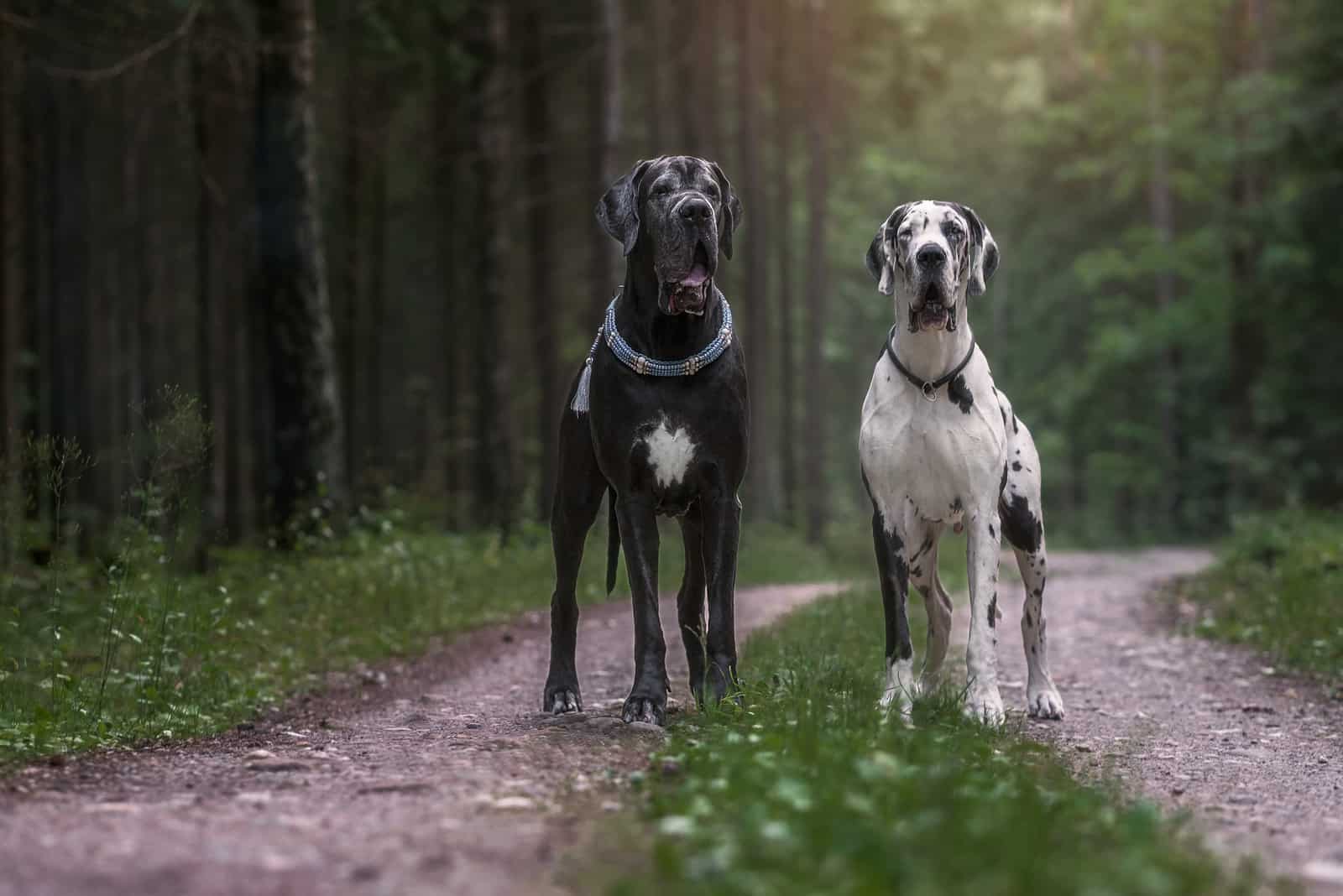The Great Dane, also known as the Apollo of Dogs, is a purebred dog breed most famous for its size – while Great Dane owners are accustomed to their large size, other people might find them frightening.
If you think that Great Danes originated in Denmark, you’re wrong. No one really knows why these dogs are associated with Denmark, but there is a story that the name Great Dane appeared in Denmark in the 1700s. Even though this country did not develop the breed, the name remains to this today.
The history of these giant dogs goes back to Egypt, where drawings of similar dogs were found, dating back to 3000 BC. It is believed that its background breeds include the Irish Wolfhound, Mastiff, and Greyhound.
This dog breed has had different names throughout history. Great Danes were originally called Boar Hounds (because they were used for hunting boars). Most breed historians think that German breeders refined the breed to be the well-balanced, elegant dog it is today. In Germany, these dogs are called Deutsche Dogge (German dog).
The American Kennel Club (AKC) recognized the Great Dane in 1887. The Great Dane Club of America was formed in 1889.
Great Danes are affectionate, intelligent, and active dogs and could be a perfect addition to your family. These dogs are not big shedders and are easy to groom.
The decision of whether to choose a male vs. female Great Dane is complex as both genders have pros and cons. This article can help you decide which one is right for you.
Are Male or Female Great Danes Better?
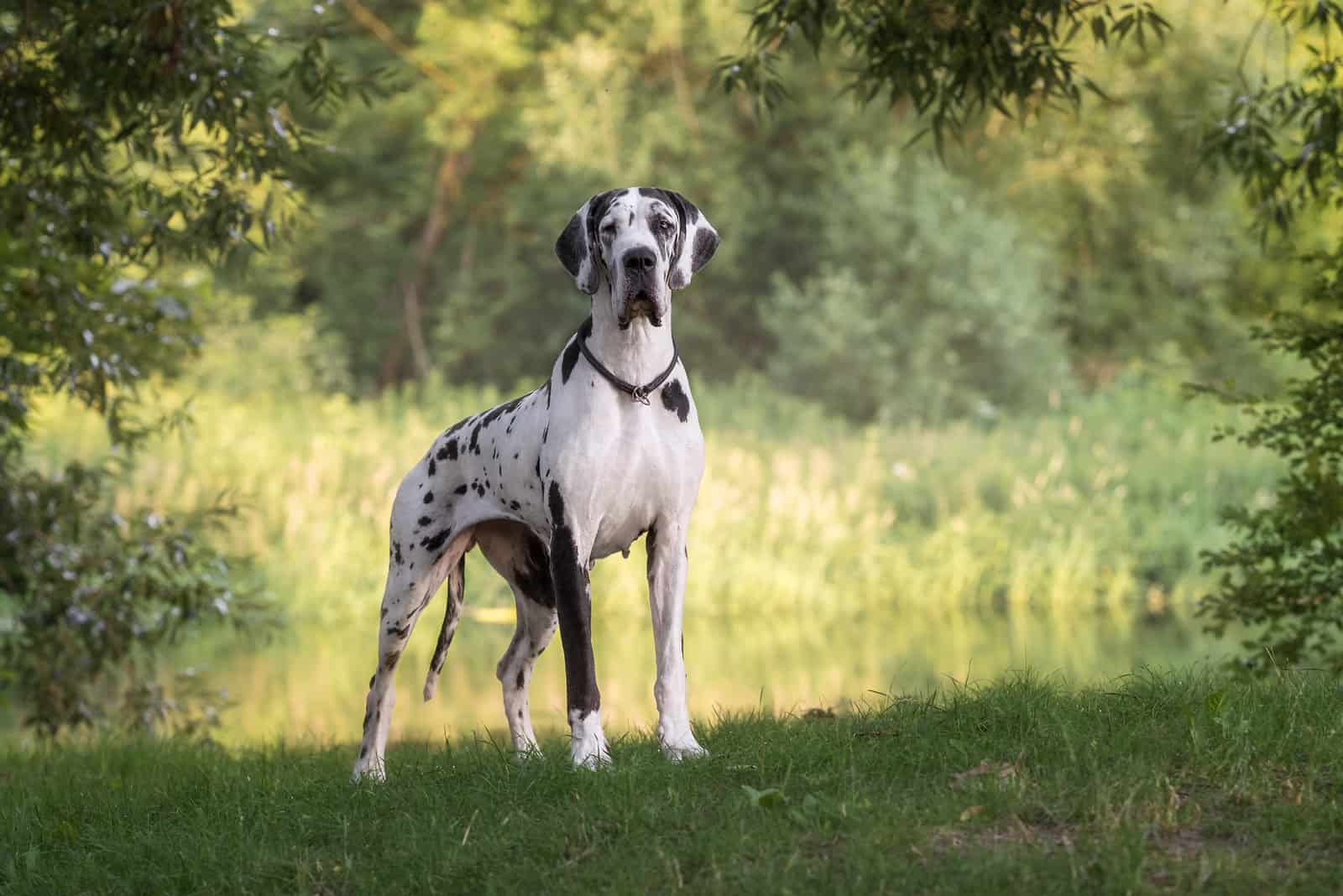
This is a really hard question, and there is no right answer to it. We can say that one thing is important here, and that’s your personal preference. Ask yourself which gender you want. Then talk to the breeder, describe exactly what you’re looking for in a dog, and ask for assistance in selecting a Great Dane puppy.
There are certain things that possible owners should think about before they get this dog. Take their size into consideration. Male Great Danes are usually taller than females.
On the other hand, female Great Danes have a heat cycle. If you previously had female dogs, you know that they are hard to control during that period.
This article is here to give you a general overview of both genders’ traits. After all, you are the one who will make the final decision. Whatever you decide, make sure you choose a pet that will fit your lifestyle and energy level.
Let’s look at the main male vs. female Great Dane differences.
What Is The Difference Between A Male And Female Great Dane?
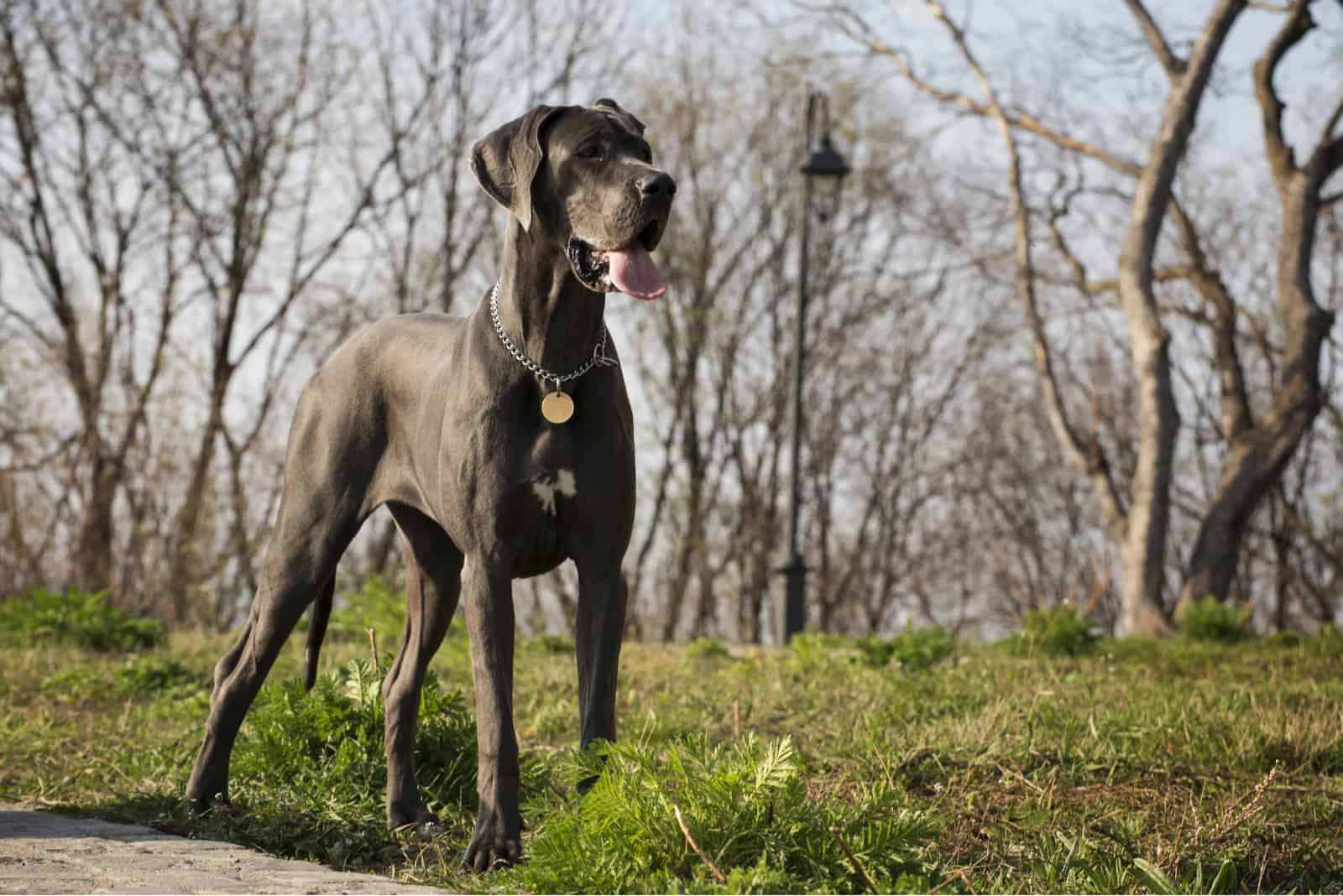
Great Danes have large, muscular bodies. Their coat is short and sleek and comes in a variety of colors, including brindle or fawn, blue, black, or harlequin.
Despite their giant bodies, both the male and female Great Dane are excellent family dogs. They just love their owners, especially their children. They are friendly towards other people; however, they can be very protective if they think you need them to defend you.
Compared to other similar-sized breeds, Great Dane dogs can live in an apartment; however, a large house with a huge, fenced backyard is always a better option for this dog.
Although there are some differences between the genders, neither of the two is outright better than the other. Yet, keep in mind that some characteristics are simply generalizations and won’t apply to every single dog.
Check out the table below to see the main male vs. female Great Dane differences:
[table id=76 /]
Male Vs. Female Great Dane – Size And Weight Difference
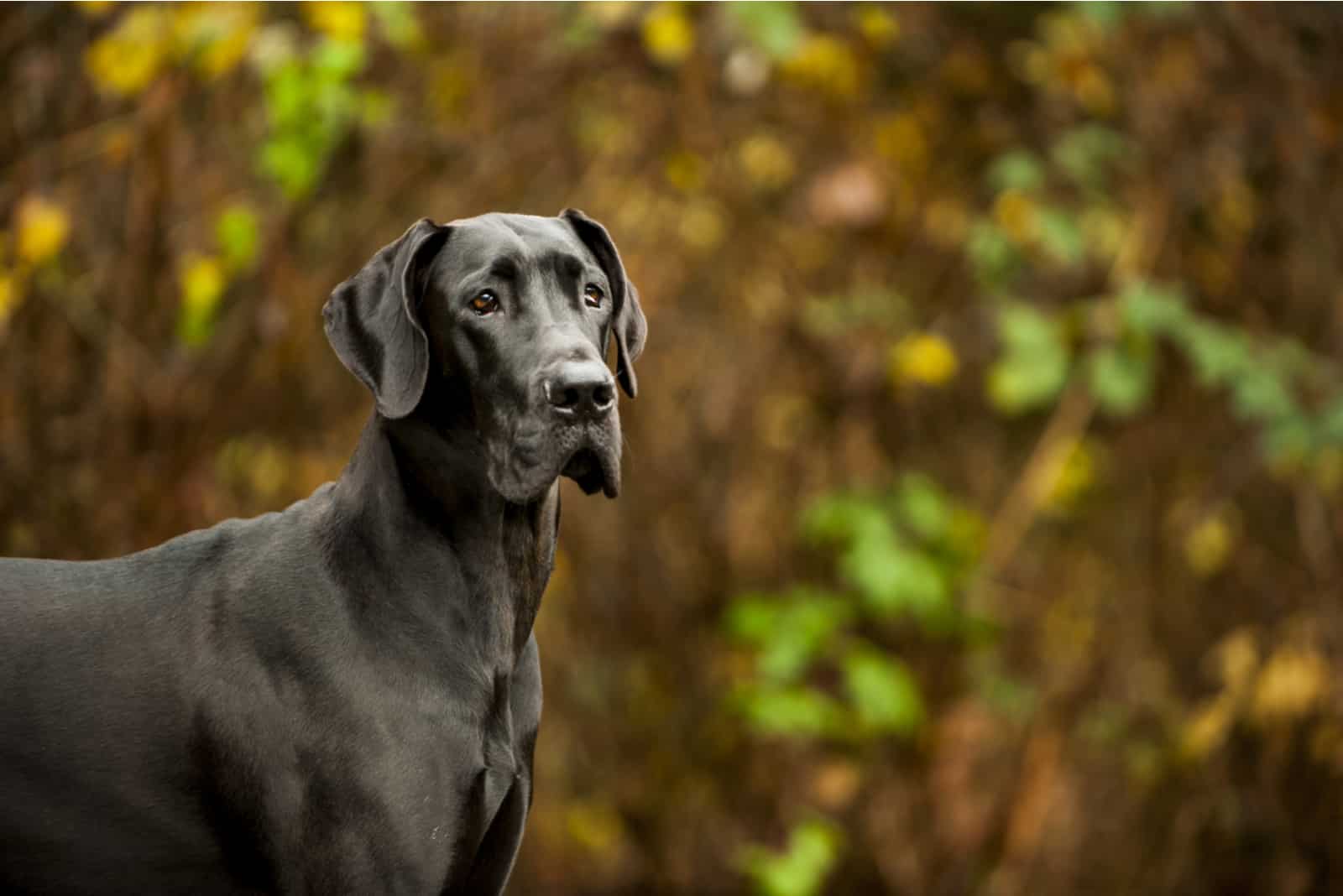
The Great Dane’s height and weight place these dogs among the largest of dog breeds. According to the Great Dane Club of America, Great Danes grow so quickly that how much they grow in one year can be compared to what a human will grow in their first fourteen years. Fascinating!
According to the AKC’s Great Dane breed standard, male Great Danes stand 30 to 32 inches at the shoulder, and they are approximately two inches taller than females. Female Great Danes are generally smaller, with a height of 28 to 30 inches.
See Also: Great Dane Growth Chart: Complete Guide To The Gentle Giant’s Size
Male Great Danes are usually heavier than their female counterparts; they can typically weigh up to 175 pounds, whereas females usually weigh up to 140 pounds. Male dogs are generally more muscular than females too.
These dogs are considered fully grown between 18 and 24 months of age. You can ask your breeder for detailed size and weight information based on your Great Dane’s parents and previous litters.
Be prepared to spend a lot of money on dog food. These dogs are huge; therefore, they need a lot of food, especially when they’re growing. Still, you should only give them food that is age-appropriate and of high quality. Avoid giving them human food because this can cause health problems.
Also, don’t feed your Great Dane puppy regular puppy food because it is too rich for them. Give them large breed specific puppy food to slow down their growth spurts.
Male Vs. Female Great Dane: Temperament
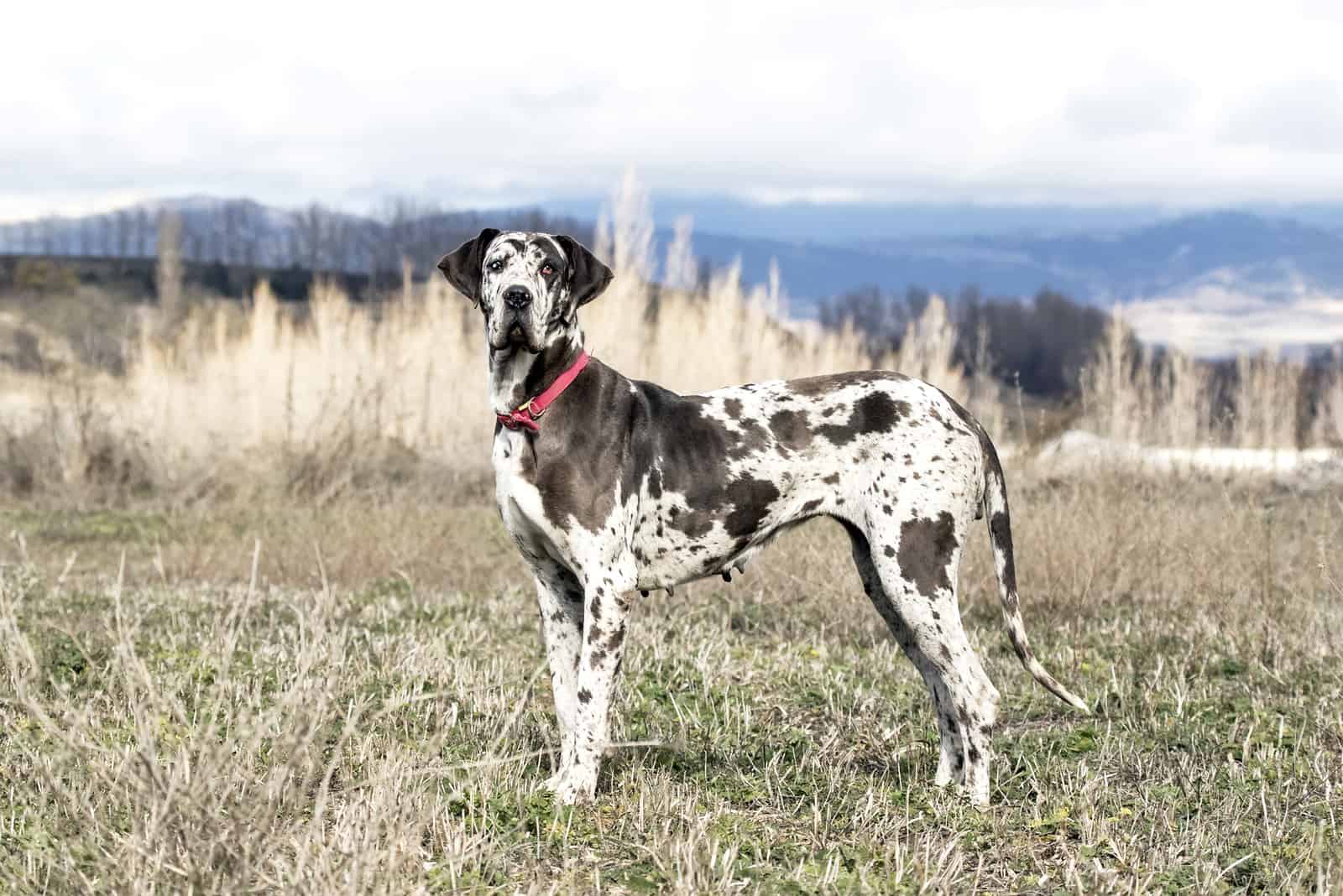
The Great Dane’s nickname perfectly describes these dogs as they are truly gentle giants. They’re good-natured, sweet, confident dogs with a great desire to please, making them easy to train.
They love to play and are usually calm with children. Great Danes can have a protective nature when their families are involved. So, it’s essential to teach young dogs not to jump up on people, and that nipping or any act of aggression is not allowed. Also, aggressive behavior should never be encouraged.
A dog’s temperament is affected by a number of factors, including heredity, training, and socialization.
In the context of male vs. female Great Dane temperament differences, here is what you need to know.
Female Great Dane
Females usually mature faster than males. This can help you train them; females can pick up commands from an early age because of their maturity.
Females can be moody. There may be several reasons for their moody behavior: heat cycle, pregnancy, or a change in hormones. But this is not the case with female Great Danes only; all female dogs can sometimes be moody.
The heat period of your Great Dane can start as early as 6 months to 1 year. It commonly runs for twenty days and happens twice a year.
Unless you plan on breeding your female Great Dane, it is recommended that you spay her. Spaying (ovariohysterectomy) is the surgical removal of the ovaries and uterus. This operation is a little complicated, but it is still considered routine. In most cases, your pet is home the next day.
According to the 2013 State of Pet Health Report, females that have been spayed live longer than those that are not spayed. Spaying decreases the likelihood of certain types of cancers. Some people recommend that you spay your females when they are nine months old to prevent them from experiencing their first heat cycle. You should ask your vet for advice about spaying and everything else related to it.
Male Great Dane
Typically, the male Great Dane is a bit more easy-going and gets along with family nicely.
Even though females are easier to train, they are not smarter than males. Both are intelligent dogs that can learn quickly if you work hard with them. Yet, males can often get distracted, contrary to females (they tend to listen to commands more carefully)
Unlike females, who usually develop a bond with only one person in the family (in most cases, its owner), male Great Danes tend to have a relationship with the whole family.
Males can smell a female’s scent (during their heat cycle) miles away. Don’t be surprised if your dog starts acting strangely (expect some humping behavior). If you want to prevent aggressive and territorial behavior, you should neuter your male Great Dane.
With neutering, your vet removes not only the testicles but also any associated structures. A male Great Dane can be neutered between six to nine months of age.
Male Vs. Female Great Dane – Trainability
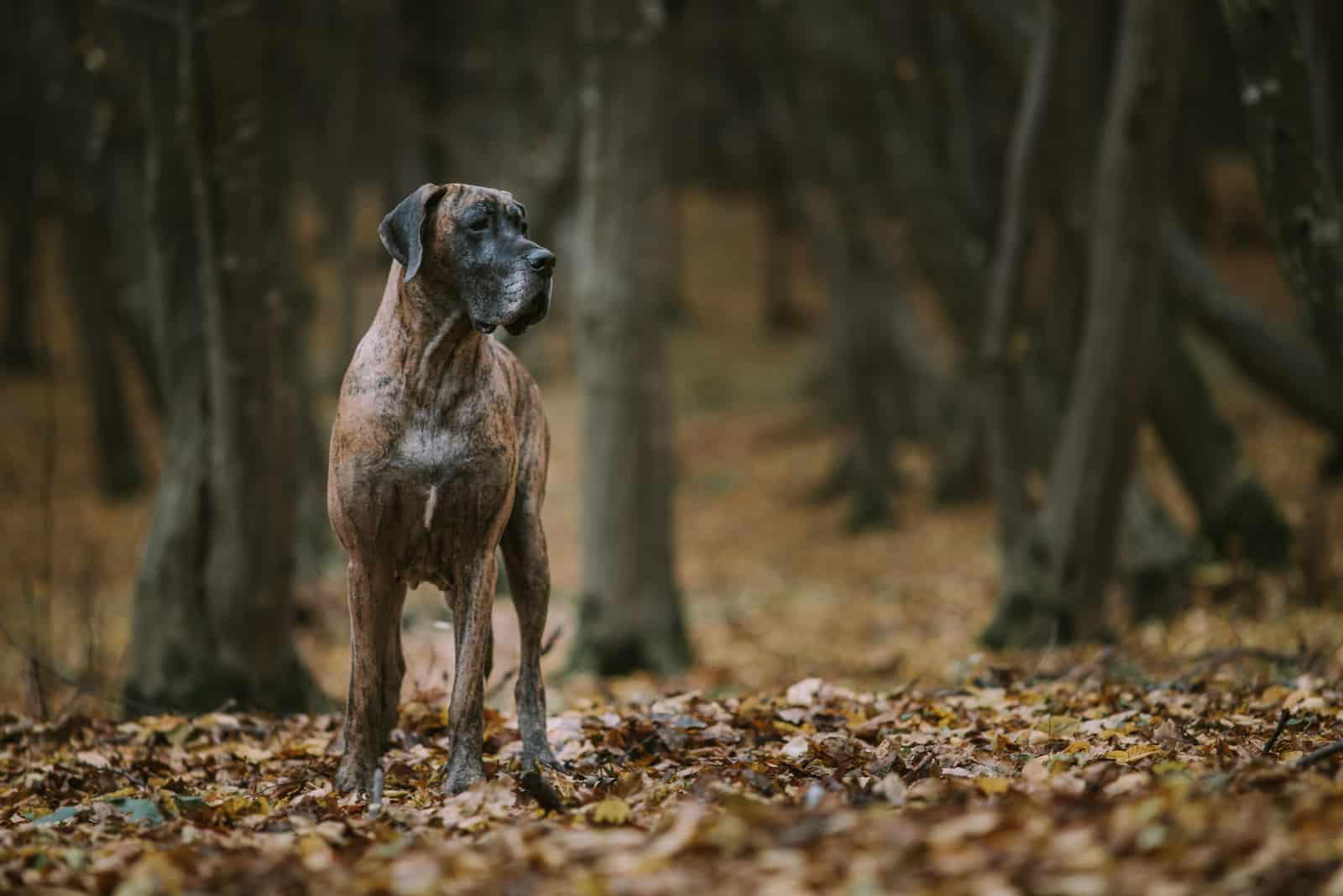
Start training your Great Dane puppy the day you bring it home. Even at eight weeks old, this dog is capable of learning everything you can teach it. There are a few basic obedience tricks your Great Dane should learn from the beginning, like how to ‘sit,’ ‘lie down,’ ‘stay,’ ‘come,’ and ‘heel.’ They should also be taught how to walk on a leash using proper leash manners before you teach them other tricks.
It’s a well-known fact that puppies are much easier to train than adult Great Danes. But adult dogs can be well trained too. Remember that Great Danes are incredibly smart and eager to please.
Don’t let the size of this dog deceive you. Use positive reinforcement, such as praise, food treats, or toys, and you’ll see good results quickly.
Crate training is also a recommended technique for your dog to respect your home and family. Crate training involves leaving your dog in a cage or crate and letting them out and around the house under your supervision or under certain circumstances, which establishes a mindset in which the cage is his home and the house is your home.
If you, the owner, are not capable of training your dog, seek help from a professional dog trainer. But make sure you consult an expert who is knowledgeable and responsible.
No matter what happens, never hit your dog. That’s not a smart thing to do, especially with a large breed like this. Your dog can become fearful of you. As a result, it can become aggressive, and you don’t want that kind of dog. Remember, violence doesn’t solve anything.
Although these dogs are very social, it is still important to ensure that your Great Dane has its own space to have a little bit of time for itself. They mostly sleep 16–18 hours per day.
An adult Great Dane needs 30 to 60 minutes of daily exercise, depending on their age and activity level. A simple walk two or three times a day can be enough for them. Keep your Great Dane on the leash; you never know what can happen.
Male Vs. Female Great Dane Socialization
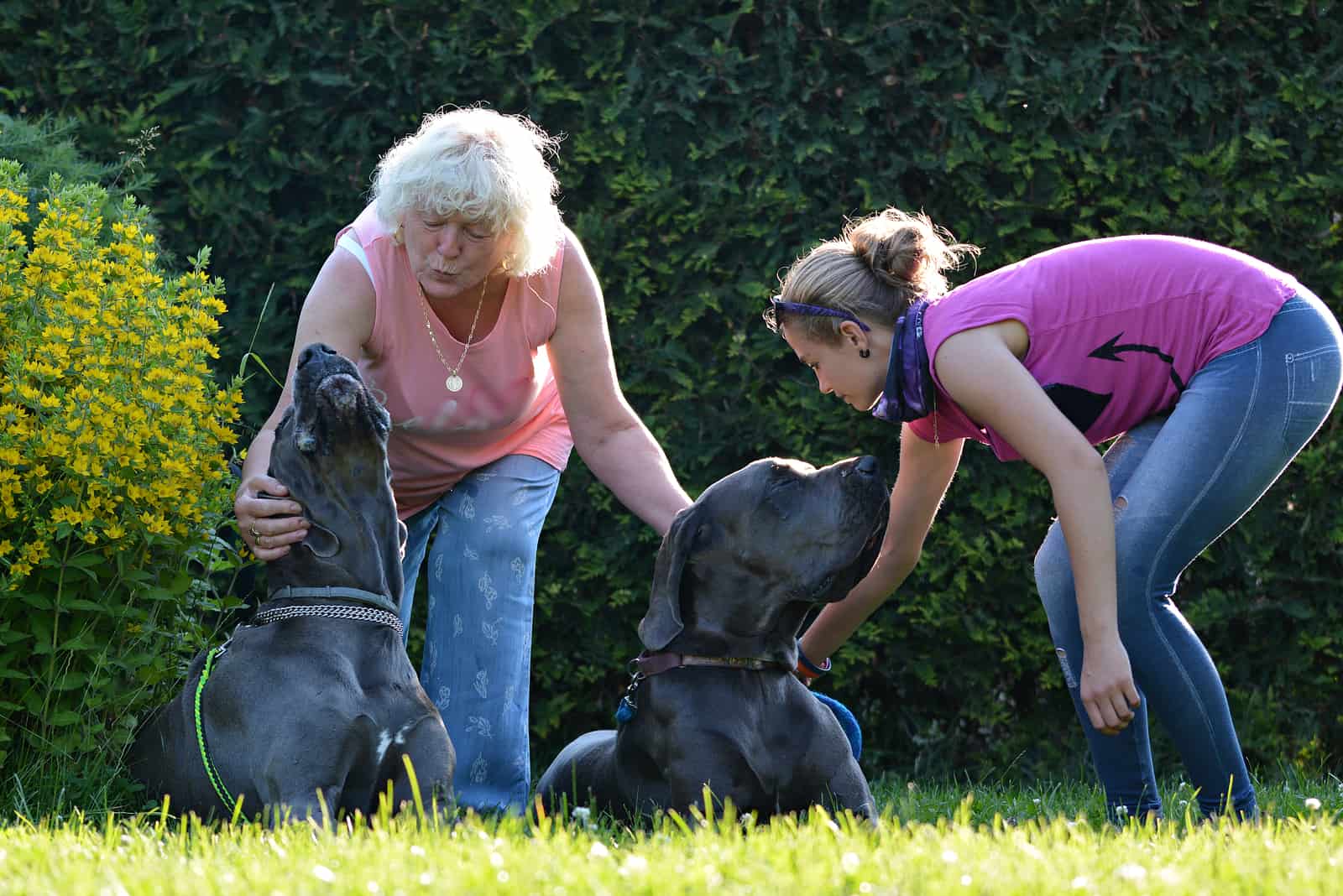
Regardless of gender, it is important to socialize your Great Dane early. A well-trained and socialized dog is always friendly towards other animals. If you are planning on having two dogs in your home, it is proven that the opposite gender gets along better than the same gender. But in the end, it depends on the individual dog.
Socialization or gently exposing the puppy to a wide variety of people, places, and situations will help your dog become a well-adjusted adult. Of course, socialization starts at home. The owners should start with both training and socialization the day they bring their puppy home.
There are few things you can do to help your dog with socialization:
• Invite people to your home, so your dog will have a chance to meet new people.
• Walk your dog daily, but always on a leash.
• Take your dog to dog parks so that it can meet other dogs.
• Keep regular vet appointments so that your dog will become accustomed to your vet and not afraid of them.
Male Vs. Female Great Dane: Common Health Issues
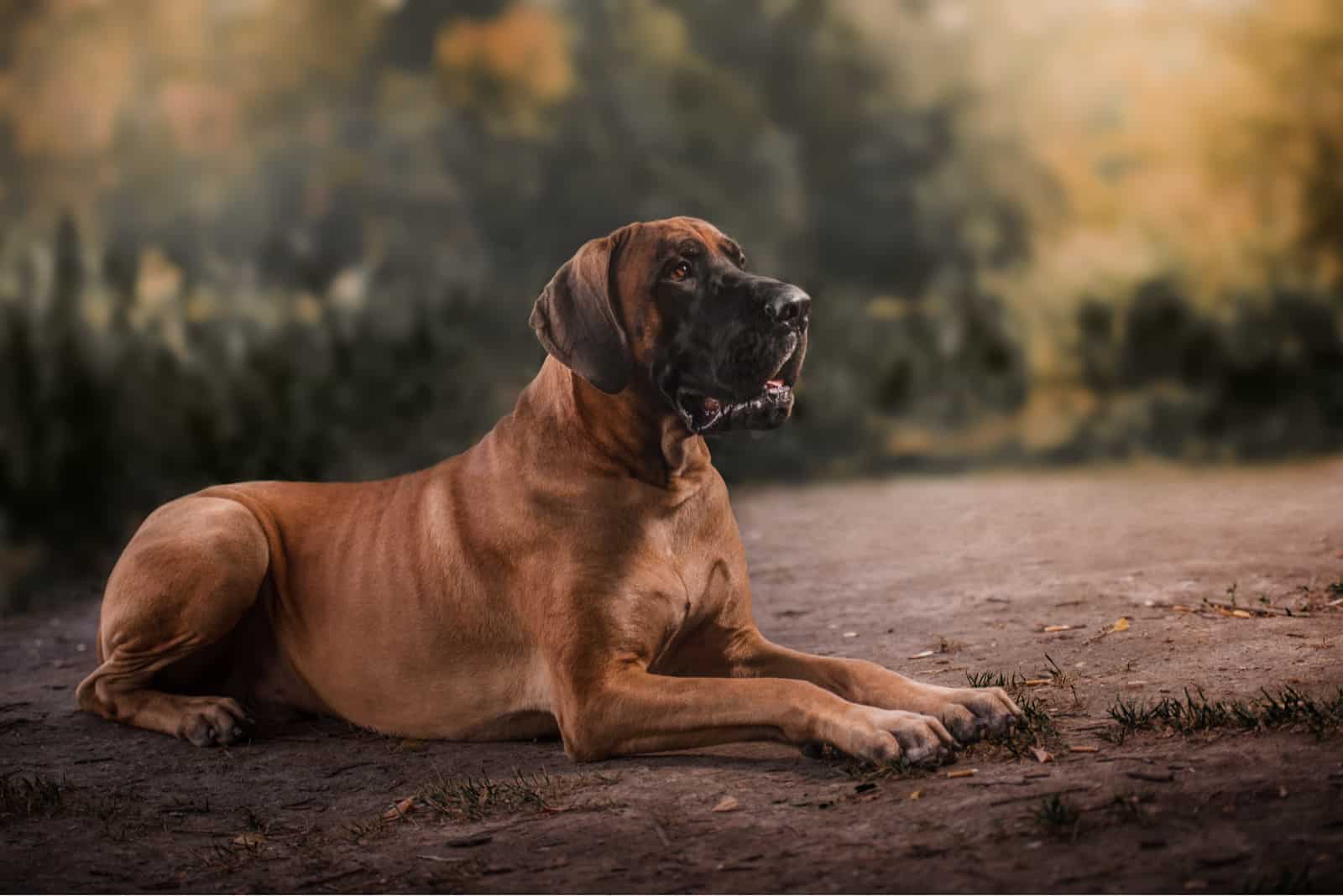
Like many other dog breeds, Great Danes are prone to certain health problems. To prevent them, we advise you to take your dog to the vet for regular checkups and discuss any concerns you may have about your Great Dane’s health.
There are many beautiful facts about this dog breed, but one thing is heartbreaking – their short lifespan. They only live seven to ten years, which is simply not enough. While you can do some things to extend their lifespan (proper diet, health care, regular exercise, etc.), you must also know what health issues your dog could have.
Both male and female Great Dane are prone to:
• Gastric torsion (or bloat) – This is a serious medical condition common to large dogs as they have a large appetite. It is a disorder of the digestive system in which the stomach is affected in two ways. The first is through bloating of the stomach, which means that the stomach fills up with a mixture of gases, foam, and fluids. The second is torsion. Torsion is caused by the bloating in the stomach, in which the stomach twists inside the abdomen. They can occur at the same time or one after another. Since Great Danes are prone to bloat, dog owners should avoid overfeeding and space their meals throughout the day.
• Hip dysplasia – With hip dysplasia, the balls and sockets of the hind legs don’t fit one another properly. The main symptom of this disease is discomfort in the hind legs, such as stiffness and lameness. Luckily, it can be treated easily with corticosteroids or anti-inflammatories. Dogs with hip dysplasia can also be given dog food that is nutritionally supplemented.
• Bone cancer (osteosarcoma) – This cancer usually affects large and giant breeds. The first sign is lameness. Unfortunately, this cancer is treated aggressively, usually with the amputation of the limb and chemotherapy.
Heart diseases such as dilated cardiomyopathy, mitral valve defects, tricuspid valve dysplasia, subaortic stenosis, patent ductus arteriosus, and persistent right aortic arch can also affect both the male and female Great Dane.
• Hypothyroidism – An underactive thyroid condition, which is a relatively common endocrine disorder in dogs. It is less common in other species. It causes bodily functions to slow down. Clinical signs of the disorder include lethargy, weight gain, and haircoat and skin changes.
Are Great Danes Good With Children?
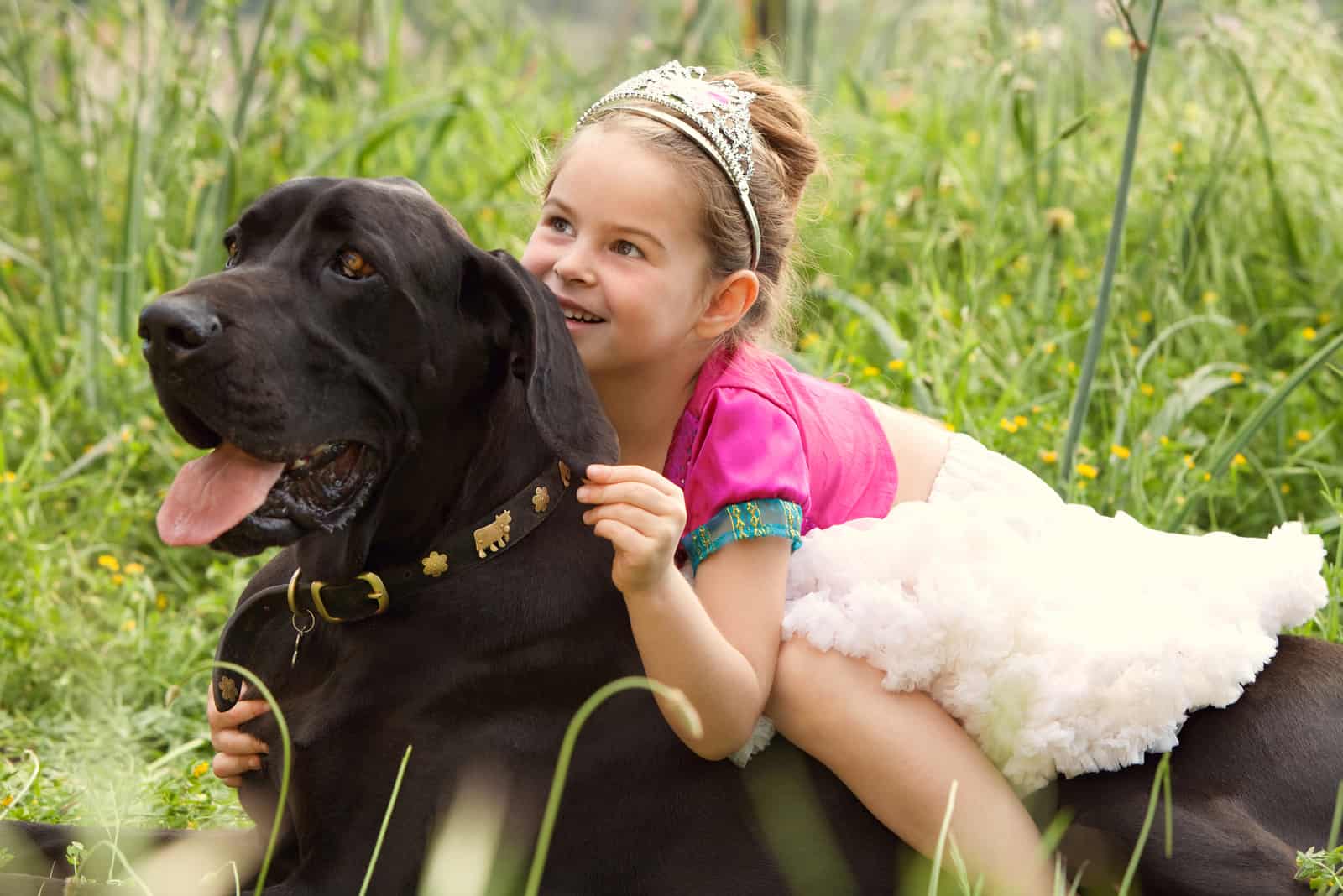
Due to their size, one of the most common questions about this majestic breed involves their relationship with children (including both babies and toddlers).
Although they might be giants, Great Danes are extremely affectionate and gentle. Not only are they perfect family companions, but they are also great with small children. Indeed, they are patient, caring, and even protective of their family members if necessary.
Often, they try to be “lapdogs” and even lean into people (usually knocking them over), of course, in a friendly and playful way. While most children find it hilarious, it is something to keep an eye out for, as a bad fall could lead to injuries.
Furthermore, while practically being the same height as children and having very strong tails, they easily knock them in the face. Although playful and unintentional on your Great Dane’s side, it is something to teach your children to be cautious about.
Last but not least, occasionally, they get the zoomies. It is their way of releasing energy, but keep in mind to distance your children while they are horsing around!
To assure a peaceful and comfortable household for both children and Great Danes, first and foremost, you need to train your Great Dane, so it understands its place in the household and listens to commands. Remember, a trained Great Dane is confident and gentle, while an untrained Great Dane is an anxious and destructive dog!
Be especially careful about having puppies around your children! Likewise, with your children, if they are too young to understand proper behavior and rules.
Another thing to keep in mind is not to leave your children unattended with untrained Great Danes. Although they are gentle giants, they might react negatively to certain interactions with children. However, once your Great Dane is trained, they can be perfect watchdogs and develop wonderful bonds with little ones.
Children need to learn how to play respectfully, not disturb a dog while eating and in general, and not mistreat him (that is, pull his tail, ride, jump on him, etc.). To teach your children how to “appropriately” play with your Great Dane, getting your Great Dane used to being touched (holding their paws, rubbing their belly, etc.) is important.
In the context of male vs. female Great Dane and their relationship with children, both genders are playful. Females are fantastic with children and are able to play gently, which probably has something to do with their natural mothering instincts. Also, females are a bit more tolerant toward additions to the family, like a new baby.
Male Vs. Female Great Dane: Which Is Better With Other Dogs And Pets?
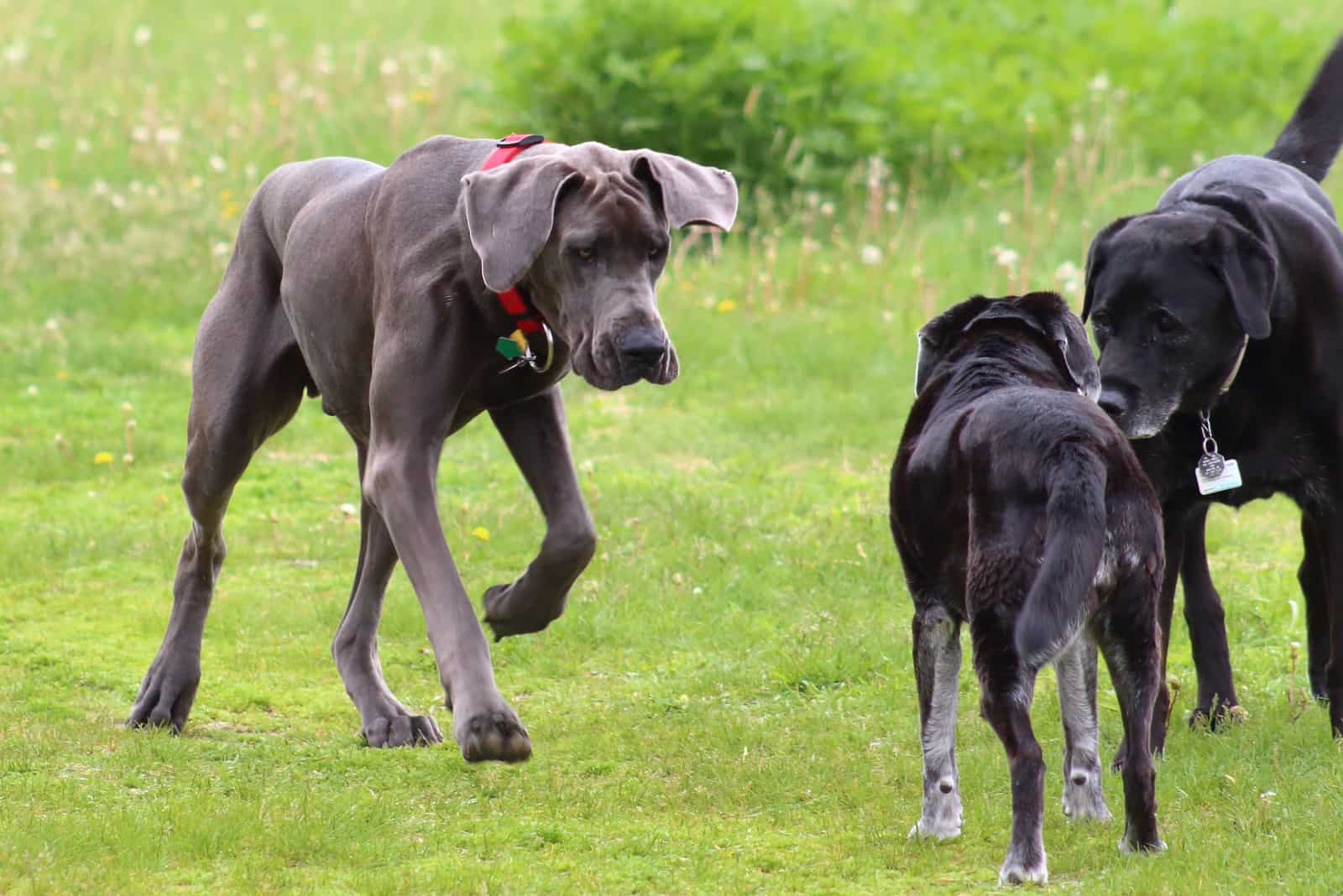
These large dogs can get along well with dogs and small animals and easily learn to coexist if taught correctly. When a Great Dane tries to play with small dogs, they usually understand it as an attack. This is mainly due to the size of the Great Dane dog, which scares small dogs.
But, when raised together, the Great Danes and small dogs can develop friendly relationships. Training a Great Dane to be around small dogs like Chihuahuas involves not leaving them alone together, and both of them need to be given their separate places (i.e., crates).
It is important to train your Great Dane to be gentle around small dogs and remember to keep an eye on them when they are in the same surroundings, given their disparity in size.
Generally speaking, a Great Dane will get along with other pets in the household. Still, occasionally, some can be aggressive towards livestock or just might not care for other pets. Despite their friendliness, some of them might develop the habit of chasing small animals.
Furthermore, they can also be great with cats if the dogs are familiar with them. A Great Dane who grows up with cats is more gentle with cats and vice versa. In this way, your dog regards the cat as a part of your family. On the other hand, as an expression of their prey drive, they like chasing cats, as it is normal for dogs to pursue them.
Should I Get A Male Or Female Great Dane?
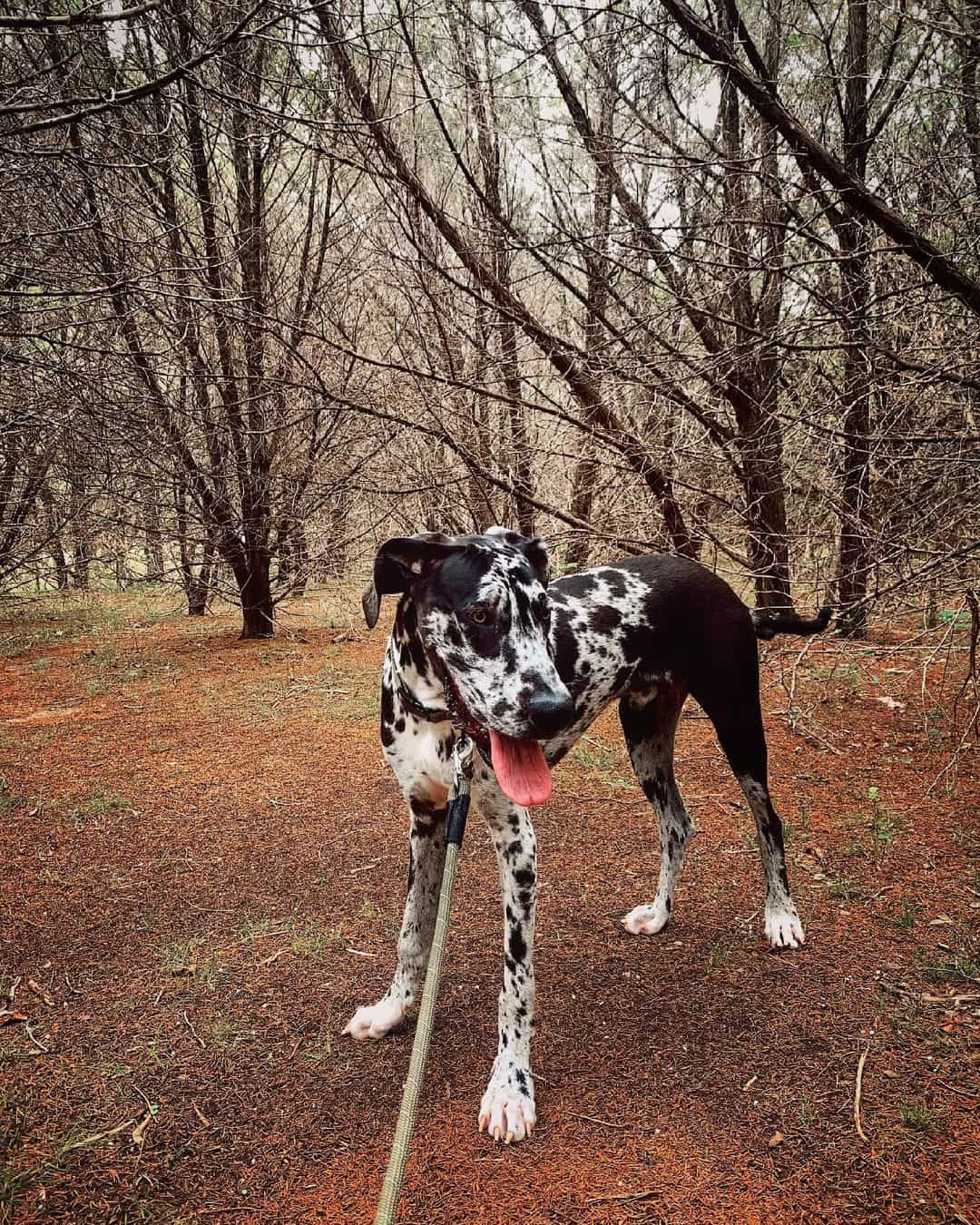
Photo from: @giffordthegreat
There are many factors you need to consider before choosing the gender of your new dog.
Let’s start with the size of this breed. If you previously had, let’s say, a Golden Retriever or German Shepherd (medium-large dogs), and you are accustomed to their size, the size of the Great Dane might present you with a bit of a problem. To get to the point, if you want this dog, you must be willing to accommodate this dog’s great size.
These dogs are suitable for apartment dwellers. However, because they are one of the largest dogs in the world, a house with a fenced background would be a better option for them.
Furthermore, if you previously owned a female dog, you already know what the heat cycle is and what temperament changes can occur when your female is moody. To avoid such problems, you should spay your female dog. Or simply choose a male Great Dane.
Male Great Danes are affectionate and smart but sometimes can be hard to train (males can get distracted easily).
Both male and female Great Danes are moderately playful, affectionate, and good with children. Nevertheless, their interaction should always be supervised. Proper training and socialization are very important for your dog.
The male vs. female question is a very personal one. Consider all the differences we’ve given you in this article, and choose a dog that will best suit you and your family. And remember to enjoy every day with this dog as you never know when it will be their last due to their short lifespan.
Read Next: Great Dane Ear Cropping: Why (Not) Do It?
